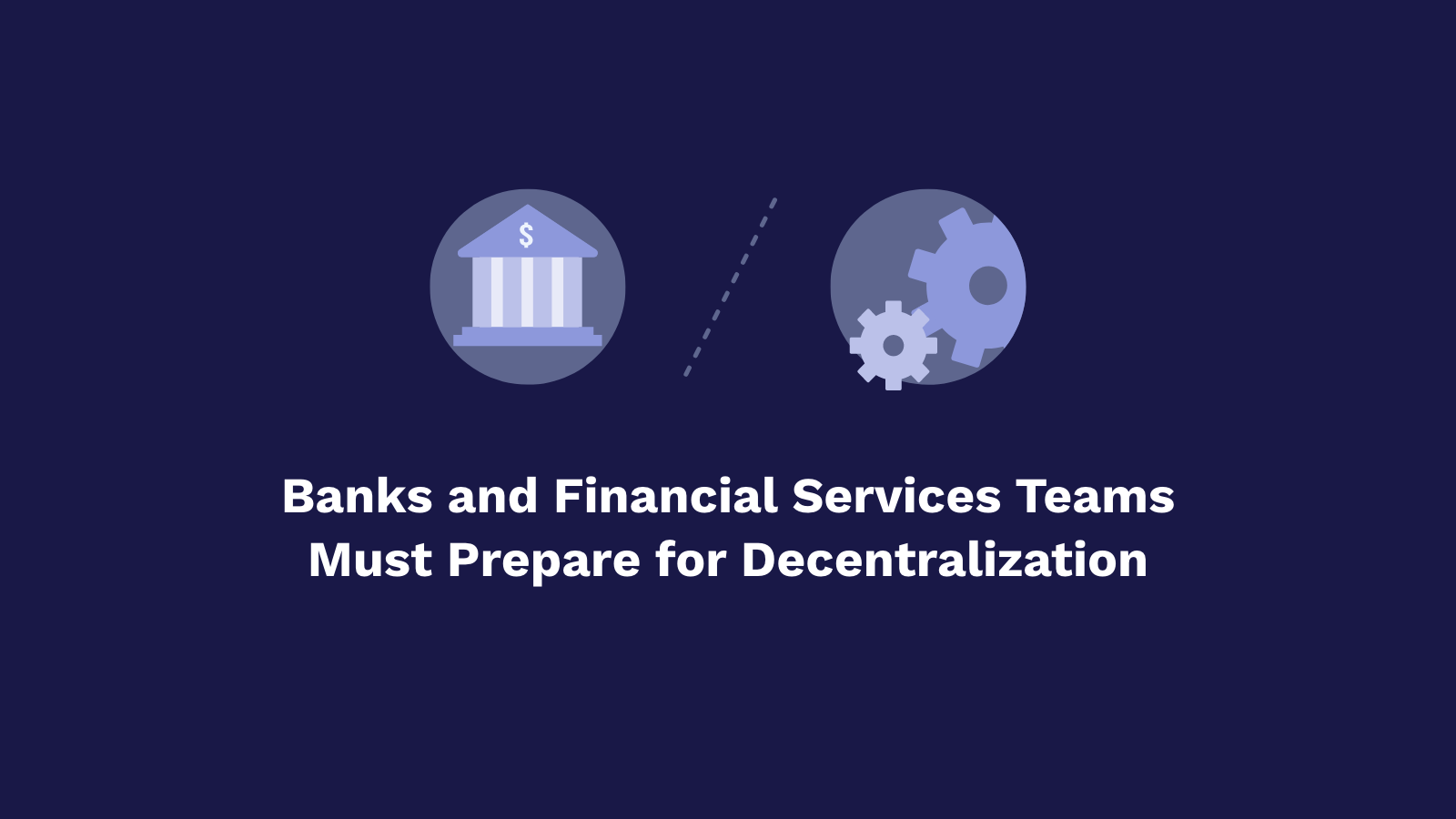
Banks and Financial Services Teams Must Prepare for Decentralization
In this new age of technology, the trend we’re seeing toward decentralized markets is opening new doors for how we access everyday services. For banking, both commercial and retail, this means the creation of a financial system that no longer relies on large, centralized entities like banks and other financial institutions, and reaches a much wider population — including the unbanked.
According to AWS, decentralization is the process in which the control and decision-making activities of a centralized organization is transferred across a distributed network. These networks, as a result, remove the intermediaries required by parties in a financial transaction in the attempt to reduce the level of trust between participants and thus, the ability for one side to take advantage of the other in ways that “degrade the functionality of the network.”
Accelerated by the digitization brought about by the pandemic, decentralized finance (DeFi), in particular, is a rapidly emerging sector that uses blockchain to mimic banking, investing, and trading services, creating more accessible alternatives to the financial solutions traditionally offered by financial institutions today.
So, how is decentralization quickly disrupting today’s finance industry as we know it, and how can banks and financial services teams prepare?
Decentralization in Financial Services
When it comes to financial services, DeFi is a part of the larger “Open Finance” movement — one that’s working towards a globally accessible alternative to current financial service offerings, and uses decentralized networks to provide the same services as banks, but more autonomously without any intermediaries.
As such, decentralized finance flips the traditional banking model of accepting deposits and providing loans by allowing borrowing and lending to take place on a larger scale between unknown participants (without any intermediaries), therefore granting greater accessibility to solutions offered by non-bank providers. Applications bring lenders and borrowers together and set interest rates automatically based on supply and demand. The protocols are inclusive: anybody can interact with them at any time, from any location, and with any amount.
The Opportunity for Banks
With non-bank providers coming into play, and quickly disrupting the traditional financial services industry, it may seem as though banks are being left behind. In reality, banks have a huge commercial opportunity they can capitalize on by leveraging DeFi to evolve from their role of storing money to distributing it, and becoming a key component in the validation of transactions on decentralized ledgers.
Some banking players are already taking the step to innovate in this space, and there is plenty of evidence that there’s still room for competition in the market by banks and card networks. These are just a few companies that are already getting involved:
- Citigroup’s Citi Flex Pay - splits large purchases into convenient payments
- J.P. Morgan Chase’s My Chase Plan - lets customers pay off big purchases over time for a fee, but stays linked to the banks' traditional credit cards
- Mastercard and Visa - allow cardholders to split transactions into installments
S&P Global additionally highlights the buy-now-pay-later (BNPL) market, a space that’s expected to grow almost 400% by 2025. The BNPL trend has generally been led by the merchant side of the coin, but in the future, it will likely also become prevalent on the card issuing side. Eventually, it’ll be no surprise when institutions that still rely on traditional credit cards and other manual, inefficient financing methods quickly lose out to the innovation of their counterparts.
Playing to Win With DeFi
One of the reasons why banks are poised to “win” when it comes to leveraging DeFi is largely due to the amount of customer data they already have access to (which also puts them at an even greater advantage to deliver the best possible personalized banking experience). There is a big effort around the client and user experience, and it’s not just related to providing traditional banking services. Rather, it’s about providing guidance, advice, and decision making tools — and the best decision making tools are those that are driven by data.
Here, the bank has insights into their corporate clients’ entire payment network, which means that they are then able to rationalize those insights, contextualize that information, and provide them back to the client in the form of an incredibly powerful client experience; one that can be commercialized.
DeFi offers a massive opportunity for banks, and soon enough, a large number of global banks will become connected by this very highly secure network where they can communicate to each other about a wide range of data points — forever changing the ease, openness, and effectiveness of how money is moved across borders. At the end of the day, decentralized finance, in tandem with financial institutions, can create a more efficient, convenient, wider reaching, and more secure experience than traditional finance alone.
__
To learn more about how your bank or financial teams can leverage open finance, schedule a demo with us.

